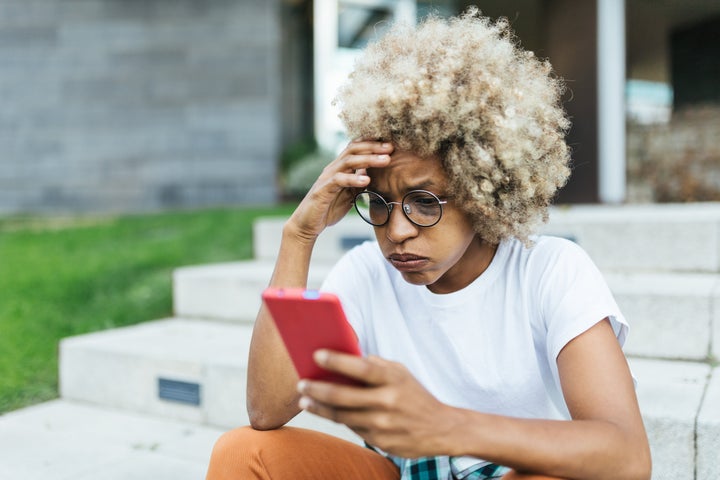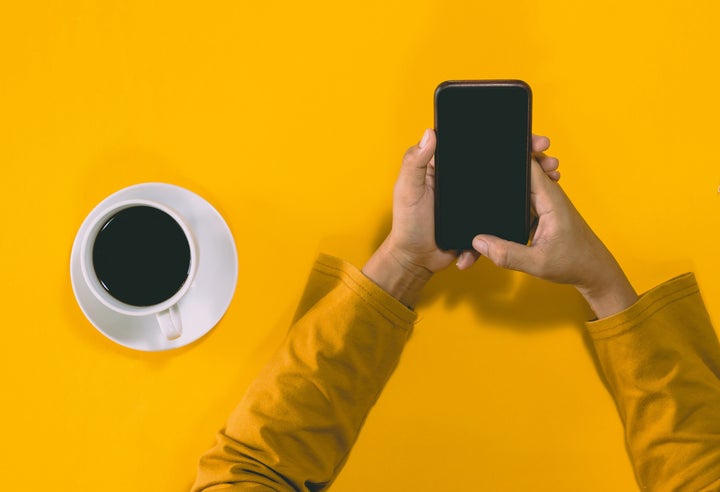
We’ve all been there: you’re out of the house for most of the day, or exploring a new city on a trip, and you realise you didn’t bring a phone charger with you.
This realisation often comes around the time you notice your battery is running low. And sometimes, buying a new charger isn’t an option. Having your phone battery die is hardly the end of the world, but it can certainly pose challenges if you need to navigate an unfamiliar place or keep in contact with people.
Fortunately, there are ways to extend your battery life and buy yourself some time before you can reach a charger. Below, tech experts share their tips.
Turn on low power mode
“Most phones nowadays have a battery-saving feature, and iPhones specifically have a feature called ‘low power mode,’” says technology reviewer and journalist Elly Bailey, aka Elly Awesome. “This reduces or alters many features to save battery life, such as your phone’s display brightness, automatic downloads, background app refresh and more. So, if you can toggle this on, it’s a no-brainer.
While iPhones automatically ask users if they’d like to turn on low power mode once the battery falls below a 20% charge, turning it on even sooner can help save more power. You can find the “low power mode” option under the Battery tab in Settings on iPhones and the analogous “battery saving mode” feature in the same place on Android phones.
Disable location services
“Some apps keep close track [of] your location, even when you’re not using them,” notes Jessica Naziri, founder of the technology and lifestyle blog TechSesh. “They do this through a process called Location Services, and although it’s meant to be unobtrusive, it can take up precious amounts of battery power.”
Naziri advised going into your settings and turning off location tracking for all your apps at once, or going through them one by one and making choices. Turning off location services means those apps will use less power.
Bailey made a similar recommendation: “If you’re really desperate to keep that last bit of charge, I would suggest going into your location services and turning it off – if this isn’t a safety issue for you.”
Reduce screen brightness
“Your phone’s display is one of its most power-hungry components, so if you’ve got the brightness slider pegged at maximum, it’s going to drain your battery in no time,” says technology writer and video creator Michael Fisher, aka MrMobile. “If you’re not outdoors in broad daylight, bumping that brightness down a little – or a lot – is a great way to conserve battery power.”
Naziri notes to “make sure the ‘auto-brightness’ is turned on, so the screen will automatically dim if you’re in a dark setting.”
Go into dark mode
Reducing screen brightness isn’t the only display adjustment you can make to help extend your battery life.
“If your phone has an OLED screen (most modern high-end phones do), switching your software to dark mode can save battery, since dark pixels on an OLED panel take no power to illuminate,” Fisher says. “They’re just off.”
Dark mode is available under Display & Brightness in iPhone settings and under Display in Android settings.

Turn off Wi-Fi
Many features that make smartphones such a great convenience – like Wi-Fi access – naturally use a good bit of battery power. So if your goal is to prevent reaching 0% before you can get to a phone charger, disable those functions.
“Turn off extra features like Bluetooth or Wi-Fi if you’re not using them,” Bailey advises.
Close battery-draining apps
If you want to preserve battery, pay attention to the apps you have open on your phone and what they’re doing.
“Those apps that suck up our time are also the biggest battery-drainers,” Naziri notes. “I’m talking about social media apps including Facebook, Instagram, LinkedIn, Snapchat, YouTube and WhatsApp. And if you’re low on juice, this is your reminder that FaceTime and playing games can kill the battery much faster than you can reach a charger.”
Watching videos and playing games are taxing on batteries, so keep this in mind if you’re trying to preserve power. Turn off push notifications for apps and close them strategically.
“Make sure background apps aren’t performing power-intensive tasks – eg. Spotify downloading a new playlist, or Google Photos performing a backup,” Fisher advises. “Note that this doesn’t mean you should go on a swiping spree, closing out all your apps. That might feel good, but it causes more harm than good by interfering with your phone’s automatic background management. The preferred approach here is a precision strike, not carpet bombing.”
Turn on airplane mode
“If you’re using your phone for offline features, or otherwise don’t need constant connectivity before you can find a charger, toggle airplane mode,” Fisher suggests. “This disables all the wireless radios, which saves a fair amount of power.”
Turning on airplane mode preserves power and serves as a good reminder to stay off your phone until you can plug it into a charger.
“Personally, when I put my phone on airplane mode, I only remove it when I need to do an urgent or necessary action,” says Marie-Philippe Gill, creator of Girl Knows Tech.
Don’t skip app updates
In addition to the above steps you can take in the moment to preserve battery, there are more general ways to promote longer battery life.
“Don’t skip app updates,” Naziri advises. “If you’ve been putting updates off, this is your sign – improving efficiency and battery management along the way. In fact, you should probably just turn on auto-update if you can.”
Be mindful about charging
It’s also important to keep overall battery health in mind when you are able to charge your phone.
“Fast charging is convenient, but it reduces the overall longevity of your battery,” Fisher notes. “If your phone has a ‘smart charging’ or ‘healthy charging’ mode and you’re not in a rush (say, if you’re sleeping and charging overnight), use it. It will charge the battery slowly and prolong its life.”
He also advised carrying an external battery pack, or asking a friend if you can use their phone to charge yours through the “power share” or “reverse wireless charging” features, if that’s an option.
“I usually try to follow Apple’s guidelines on battery health,” Gill says. “For example, I try to minimise the amount of battery cycles that my devices go through.”
Naziri says she generally avoids charging her phone to a full 100% when possible.
“A lithium-ion battery doesn’t like to be fully charged or warm,” she explains. “The lithium-ion batteries in our phones last longest when we keep them charged between 30% and 80% throughout the day – not just topped up to 100%, then down to zero. Also, wireless charging is so convenient, but batteries prefer a slow and steady input. Consider using a standard charger when you can.”